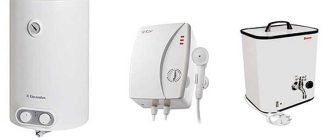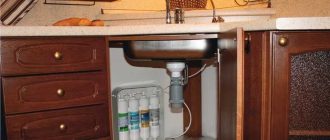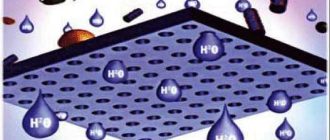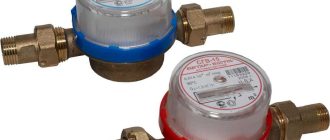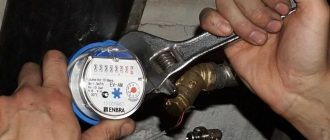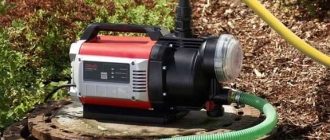From the correct strapping of the electric water heater of the accumulation type (boiler) depends not only on the life of the equipment, but also on the safety of the occupants. This is how serious things are. And its correct strapping is a safety valve for the water heater on the cold water supply.
Artiklens indhold
For what is needed
Installing a safety valve prevents the pressure inside the appliance from rising above the normative pressure. What causes the pressure to rise? As you know, when water is heated, it expands, increasing in volume. Since the boiler is a sealed device, the excess water has nowhere to go – the taps are closed and there is usually a check valve on the supply. Therefore, heating water leads to an increase in pressure. It may well happen that it exceeds the strength of the device. Then the tank will burst. Here to prevent this from happening, put a safety valve for the water heater.
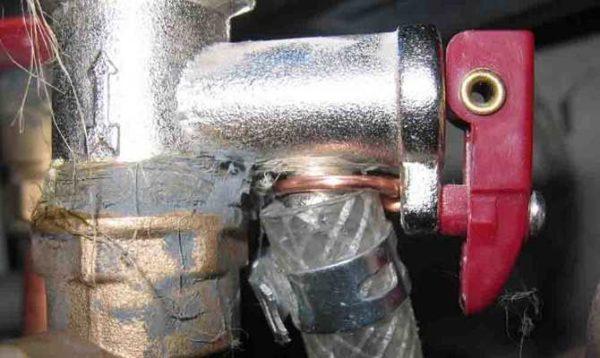
Maybe it is not necessary to put a safety valve, and just remove the check valve? With a sufficiently high and stable pressure in the water supply, such a system will work for some time. But the solution is fundamentally wrong and here’s why: the pressure in the water supply is rarely stable. Often there are situations when water barely runs from the tap. Then the hot water from the boiler will be pressurized and forced into the water system. This will expose the heating elements. They will heat the air for a while and then burn out.
But burned out heating elements are not the worst thing. Much worse, if they glow, and at this time the pressure in the water supply will rise sharply. Water falling on the hot heaters vaporizes, there is a sharp increase in pressure – jerk – which leads to a guaranteed rupture of the boiler bulb. At the same time, a decent volume of scalding water and steam, under high pressure bursts out into the room. What it can threaten – it is clear.
Sådan fungerer det
The safety valve for the water heater would be more correctly called a system of valves, since there are two of them in the device.
They are located in a brass or nickel-plated housing, which has the form of an inverted letter “T” (see photo). In the lower part of the casing there is a check valve that prevents water from flowing out of the water heater when the pressure in the system decreases. In the perpendicular branch there is another valve, which, when the pressure is exceeded, allows the release of part of the water through the connection.
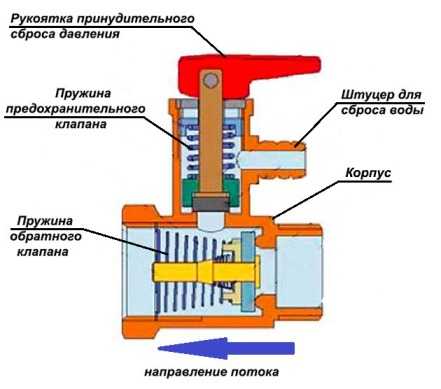
The mechanism of operation is as follows:
- As long as the pressure in the boiler is less than that in the water supply (when filling or when the tap is open), the disc plate of the check valve is pushed back by the water flow. As soon as the pressure equalizes, a spring presses the plate against the body protrusions, shutting off the water flow.
- When the heating is switched on, the water temperature gradually increases, and with it the pressure rises. As long as it does not exceed the threshold pressure, nothing happens.
- When the threshold level is reached, the pressure compresses the spring of the safety valve and the outlet to the connection is opened. Some of the water from the boiler is drained through the connection. When the pressure drops to normal pressure, the spring closes the passage and the water stops flowing out.
It is clear from the principle of operation that water will constantly drip out of the connection. This happens when the water is heated, when the pressure in the water supply line decreases. If you periodically see water on the connector, then everything works normally. But the draining liquid must be drained. To do this, put a tube of suitable diameter on the spigot, be sure to fasten it with a clamp. The normal operating pressure of the boiler is from 6 bar to 10 bar. Without mechanical fastening, the tube will be torn off in no time, so choose a high-quality clamp and tighten it well. The tube is led out to the nearest sewer drain.
One more thing: the tube on the connector need transparent and preferably reinforced (so-called “herringbone”). Why reinforced is clear – because of the pressure, and transparent – for the possibility of monitoring the performance of the device.
Types and varieties
If we are talking about ordinary safety valves for a water heater, then they look almost identical, only the nuances differ. But it is these small details that are responsible for the convenience and safety of operation.
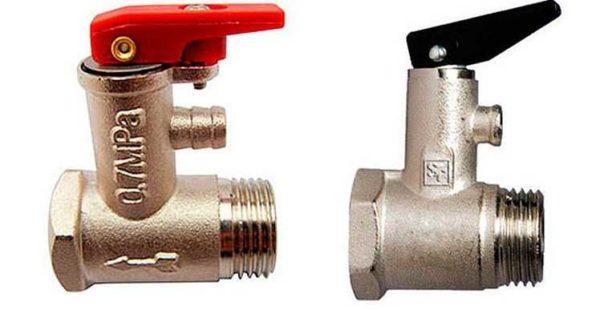
In the photo above are two safety valves with release levers. They are needed for periodic performance checks. The flag on the lever is lifted upwards. It pulls the spring behind it, freeing the pressure relief valve to release water. This check should be done about once a month. You can also empty the boiler tank – raise the flag and wait for everything to drain.
Design features
The difference in the presented models is that in the model on the photo on the left, the lever is fixed with a screw. This eliminates the possibility of accidental opening and complete discharge of water.
Two more differences catch the eye. This is an arrow on the body, indicating the direction of water flow, and an inscription showing what pressure the device is designed for. Seemingly insignificant details. But if the direction of water movement can be understood (look in which direction the disc valve is turned), then with the nominal value is more difficult. How to distinguish, for example, whether it is 6 bar or 10 bar? Only by testing. And how will the sellers distinguish between them? They don’t. By the boxes. What if they put it in the wrong box? In general, it is better not to take a valve without markings on the body. This is usually the cheapest of the Chinese samples, but the difference in price is not so great that it is worth the risk.
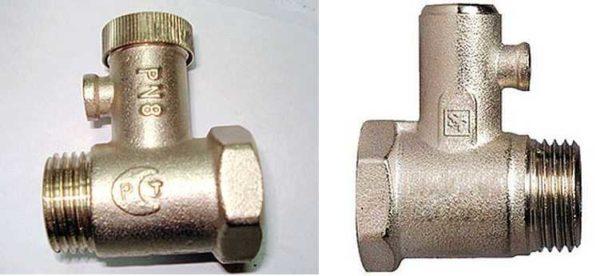
Also pay attention to the shape of the water discharge fitting. The model on the left has a long, non-linear shape. The hose will fit on it quite easily and the length is long enough to install a clamp. The model on the right has a different shape, with an extension towards the end, but more importantly, it is short. It is still possible to pull the hose on it, but the clamp is questionable. Unless you crimp it with wire…
In the next photo, the safety valves without the forced pressure relief flag. The one on the left has a threaded cap at the top. This is a serviceable model. The cap can be unscrewed as needed to remove clogs, scale and other contaminants.
The model on the right is the worst of the options. No labeling, forced reset or maintenance. These are usually the cheapest of their available, but that is their only advantage.
For large volume boilers
All of the above models are suitable for water heaters up to 50-60 liters. For larger boilers there are other models, many of which have additional devices built in. These are usually ball valves and/or pressure gauges to monitor pressure.
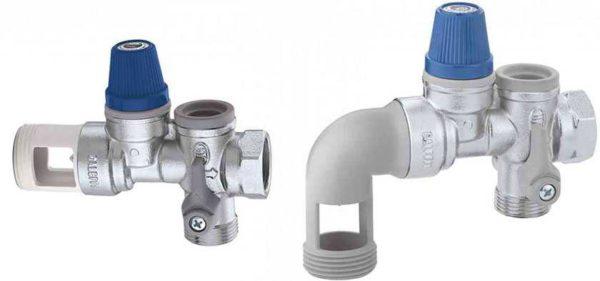
The water discharge connector here has a standard thread, so there will be no problems with the reliability of fastening. Such devices already have a rather high price, but their quality and reliability are much higher.
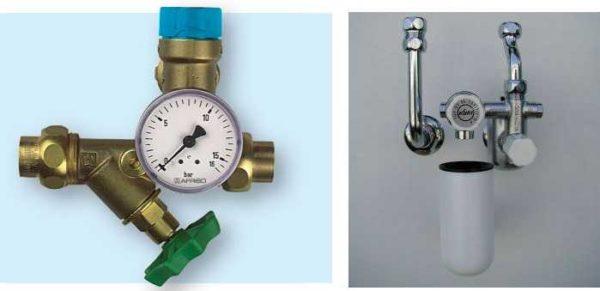
Not everyone likes these devices by appearance. For those who attach great importance to aesthetics are released very even attractive devices. Their price, however, is comparable to the price of a non-cheap water heater, but it is beautiful.
Is it possible to put other valves
Sometimes, instead of a special safety valve for the boiler put subversive, which is intended for emergency water discharge for heating. Although their functions are similar, the basic mode of operation is fundamentally different. Explosive should be triggered only in emergency situations. It is designed for volley discharge of a large volume of liquid. It is not suitable for continuous discharge of small portions of water. Accordingly, it will not work correctly.
Another case is the installation of a check valve only. It will not allow water to drain when the pressure in the water supply system decreases, but it will not save from pressure increase in the boiler. So this option is also not workable.
How to choose and install
Choose a safety valve for a water heater on the pressure for which the unit is designed. This figure is in the passport. Also on the choice affects the volume of the tank. Produce devices with a limit of operation at 6, 7, 8, 10 bar. Basically, all units are designed for this pressure. So everything is simple.
Installation is simple: the thread is wrapped with linen wool or fum-tape, after which the valve is screwed onto the socket. The valve is screwed on by hand until it stops, then one or two more turns with the help of wrenches. It is much more important to choose the right place for its installation. When installing the water heater, the valve is installed directly on the cold water inlet pipe.
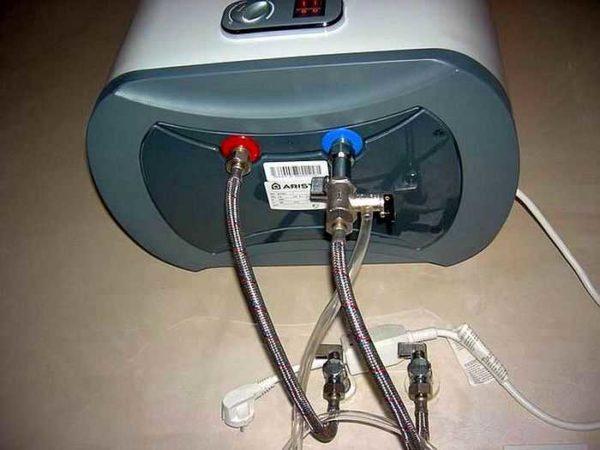
Then there may be a check valve, which is also called a shut-off valve. But this is already a reinsurance – the same device is available in the safety valve, and often after the water meter at the inlet. The installation scheme is shown below. This is one of the normal options.
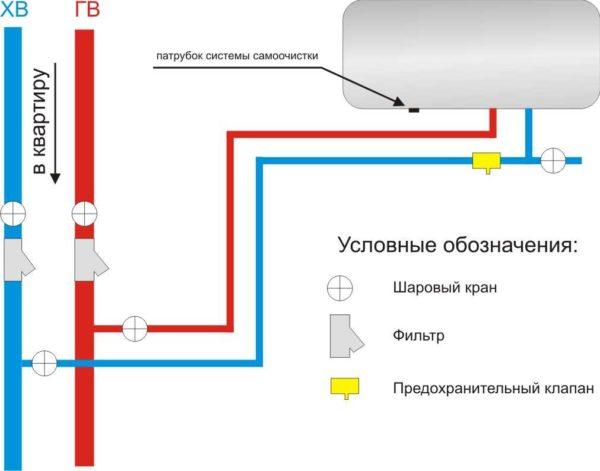
On the scheme there is a ball valve. It is necessary for emptying the tank before preservation for the winter (in summer houses) or before dismantling for preventive maintenance and repair. But more often it is put on a tee, which is screwed directly on the inlet pipe of the water heater. On the tee at the bottom is screwed on the safety valve, and in the side outlet put a ball valve.
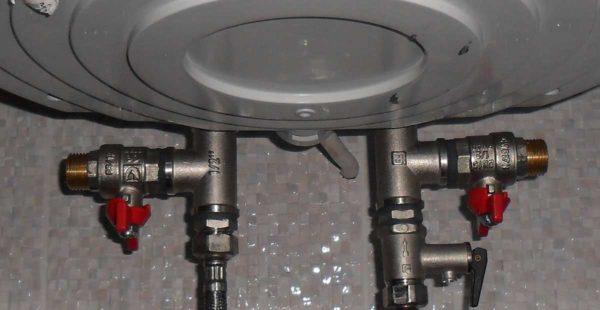
Actually, these are all normal options.
Breakdowns, causes, elimination
In principle, the safety valve for the water heater has only two breakdowns: from it either often flows water or does not flow at all.
First of all, it should be said that water bleeding during heating is the norm. This is how the system should work. Water can also be drained when the boiler is switched off, if the pressure in the cold water pipes is higher than the limit of the valve. For example, the valve is set at 6 bar and the water supply is at 7 bar. Until the pressure drops, the water will be vented. If this situation is repeated often, it is necessary to install a reducer, and best of all on the water to the apartment or house, but there are compact models of reducers that can be installed at the entrance to the boiler.
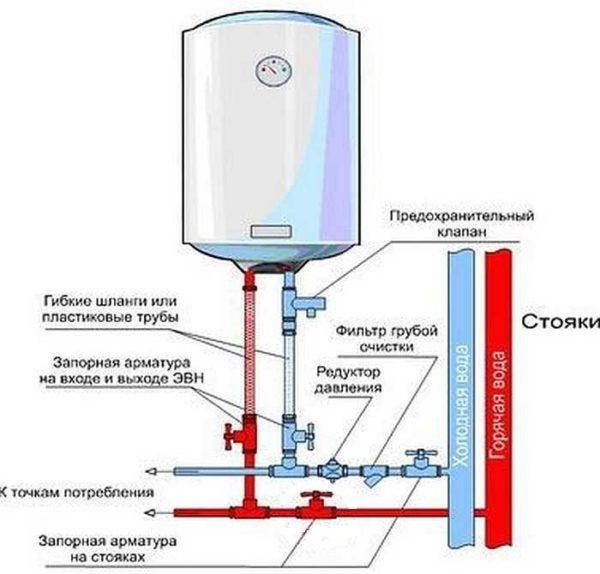
How do I check if the valve is working properly? If there is an emergency reset lever, this is easy to do. When the boiler is switched off, lift the lever several times to release the excess pressure. The dripping will then stop and will not resume until heating is started.
If water continues to drip, it is possible that the spring is clogged. If the model is serviceable, the unit is disassembled, cleaned, and then put back in place. If the model is not disassembled – it is only necessary to buy a new valve and put it.
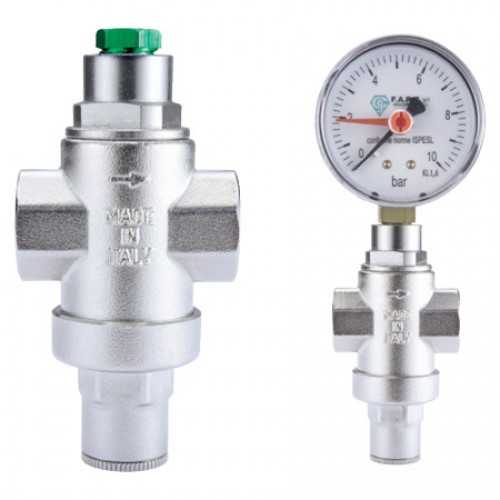
Constantly dripping water – it is unpleasant and “beats” on the wallet, but not dangerous. It’s much worse if you never have water in the spigot when heating water. The reason is a clogged valve or a clogged outlet fitting. Check both options. If it doesn’t work, change the valve.

